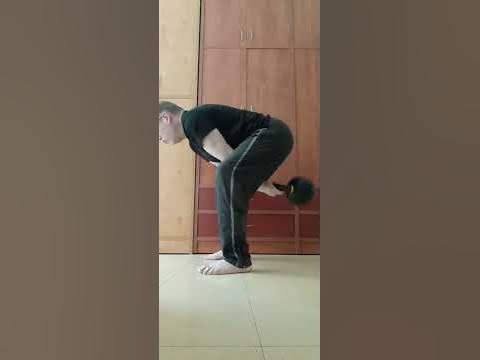TedM
Level 6 Valued Member
Hello all-
Hope to be dropping in for a long time to come.
Total newbie to this and to weights in general. 62 yr old male; my activities have been swimming (20 min. kilometer and out..) and almost daily walking in the hills near our home, in Jerusalem. No injuries that impede mobility; my knees have been sore of late, but that's probably due to new orthotics.
Came to hear of Pavel and S&S when my pool closed down. I was looking for a low impact, simple, strength and flexibility replacement program. My son sent me a link to the interview with Pavel and Joe Rogan and I was instantly sold.
I finally got my copy of S&S and am working to follow it. I'm focusing on form and that's why I'm writing.
As of now, 1 1/2 weeks into it, I'm doing 3 sets of the warmup circuit (I don't use a kettlebell to go down/up for the goblet squats. I take it off the floor and do a few kinda curls each time I go down, but I don't feel ready to take it up and down yet.) I have one 16 kg as of now.
AFter the circuits, I'm doing just deadweight sets and really trying to make sure my form is correct on the deadweights. Then I'll progress.
I'm here to ask for some feedback on my form. @Steve Freides suggested sending in a vid, and so, here it is, attached.
Thanks in advance for any and all feedback!!
Hope to be dropping in for a long time to come.
Total newbie to this and to weights in general. 62 yr old male; my activities have been swimming (20 min. kilometer and out..) and almost daily walking in the hills near our home, in Jerusalem. No injuries that impede mobility; my knees have been sore of late, but that's probably due to new orthotics.
Came to hear of Pavel and S&S when my pool closed down. I was looking for a low impact, simple, strength and flexibility replacement program. My son sent me a link to the interview with Pavel and Joe Rogan and I was instantly sold.
I finally got my copy of S&S and am working to follow it. I'm focusing on form and that's why I'm writing.
As of now, 1 1/2 weeks into it, I'm doing 3 sets of the warmup circuit (I don't use a kettlebell to go down/up for the goblet squats. I take it off the floor and do a few kinda curls each time I go down, but I don't feel ready to take it up and down yet.) I have one 16 kg as of now.
AFter the circuits, I'm doing just deadweight sets and really trying to make sure my form is correct on the deadweights. Then I'll progress.
I'm here to ask for some feedback on my form. @Steve Freides suggested sending in a vid, and so, here it is, attached.
Thanks in advance for any and all feedback!!

